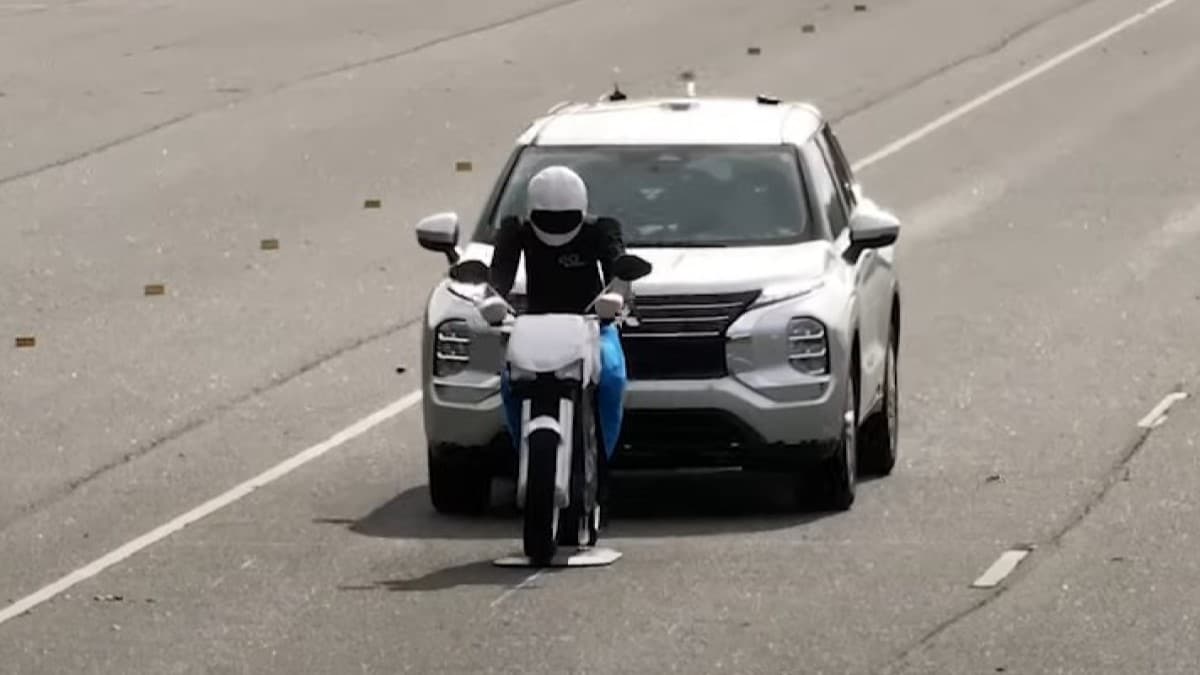Car safety technology keeps advancing. To keep pace, one of America’s major car safety watchdogs keeps coming up with tougher tests. Ten compact SUVs struggled to prevent crashes with motorcycles and large trucks in its latest round. That’s concerning, but it’s also a sign of progress – car safety is getting so good that evaluators must get more specific with their tests.
“The vast majority of new vehicles now come with automatic emergency braking, and our research shows the technology prevents as many as half of all front-to-rear crashes,” says David Harkey, president of the Insurance Institute for Highway Safety (IIHS). “This new, tougher evaluation targets some of the most dangerous front-to-rear crashes that are still happening.”
Your Insurance Company’s Crash Tests
America has two major crash-testing agencies.
Related: Car Safety Ratings And How They Work
One is the federal government’s National Highway Traffic Safety Administration (NHTSA). It crash tests every car model for sale in the U.S. and publishes safety ratings on a five-star scale.
The other is the IIHS – not a government agency. A group of insurance companies funds the institute. Accidents and injuries cost insurance companies money, so they are motivated to prevent them.
The IIHS is nimbler than a government agency. The IIHS doesn’t answer to a complicated public review system and can add new tests and modify old tests with relative ease. Many in the auto industry consider the institute the stricter grader.
The IIHS routinely pushes automakers into new safety innovations by making its tests harder to pass.
The New Tests
This year, tests involve faster speeds and more types of vehicles to avoid.
The institute’s old crash prevention tests evaluated whether automatic emergency braking could keep a car from hitting another vehicle at 12 and 25 mph.
The IIHS says the new procedure “includes trials run at 31, 37 and 43 mph (50, 60 and 70 kilometers per hour). In addition to a passenger car target, it examines performance with a motorcycle target and a semitrailer.”
The institute says it consulted with police groups to develop the new tests.
Senior Research Scientist David Kidd says, “Deadly underride crashes often occur when the struck vehicle is a large truck, and motorcyclists are frequently killed when they’re rear-ended by a passenger car since their bike offers no protection from the impact.”
In each test, “an engineer drives the test vehicle toward the target at the selected speed and records when the forward collision warning occurs and how much the AEB system slows the vehicle to prevent or mitigate the impending impact. If the test vehicle fails to achieve a minimum speed reduction at the slower test speeds, only the forward collision warning system is evaluated in the higher-speed tests.”
The tests use a simulated car and motorcycle with a rider so test vehicles can safely collide with it if the systems fail to stop an accident. The trailer is actual, but “in all the test runs using the trailer, only the forward collision warning system is evaluated, and the driver steers out of the lane to avoid a crash,” the IIHS says.
The Results
The institute awards scores of Good, Acceptable, Marginal, and Poor. Only one of the ten SUVs tested – the Subaru Forester – earned a Good score. Even it didn’t avoid every accident.
The IIHS says the Forester “avoided a collision with the passenger car target at every test speed, avoided hitting the motorcycle target at 31 and 37 mph, and slowed by an average of 30 mph before hitting the motorcycle target in the 43 mph tests.” It gave drivers at least 2.1 seconds of warning in every circumstance.
| Vehicle | Score |
| 2023-2024 Subaru Forester | Good |
| 2023-2024 Honda CR-V | Acceptable |
| 2023-2024 Toyota RAV4 | Acceptable |
| 2023-2024 Ford Escape | Marginal |
| 2023-2024 Hyundai Tucson | Marginal |
| 2023-2024 Jeep Compass | Marginal |
| 2023-2024 Chevrolet Equinox | Poor |
| 2023-2024 Mazda CX-5 | Poor |
| 2023-2024 Mitsubishi Outlander | Poor |
| 2023-2024 Volkswagen Taos | Poor |








